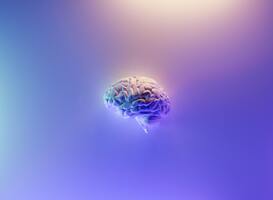“Almost everyone is familiar with the growth diagrams that doctors use to measure the development of children, for example the growth diagrams developed by the World Health Organization,” says Andre Marquand, researcher at the Radboudumc’s Department of Cognitive Neuroscience. “Doctors worldwide, for example, plot body weight or height against age. For example, they assess the development of an individual child against the variation in the population, and they detect developmental delays.”
The researchers now offer the same for the brain: growth charts for brain development and aging, not just for children, but for the entire lifespan from two to a hundred years. “We analyzed high-resolution MRI images of nearly 60,000 people from about 80 MRI scanners around the world,” explains Saige Rutherford, PhD student and first author. “We used measurements of the volume of different brain structures or the thickness of the cerebral cortex at different ages, and created growth diagrams for each brain region, creating an accurate atlas of the human brain throughout life.”
Changes in brain structure
The models make it possible to make predictions at the level of an individual about the growth and aging of the brain, compared to population norms. Marquand: “We now have a reference model that allows us to map variation between individuals and which helps us to better understand many different brain disorders, such as ADHD, schizophrenia, dementia and Alzheimer’s disease.”
The applications are countless. The models detect changes in brain structure, which can indicate the development of a psychological disorder at an early stage. They can assess whether an area in an individual’s brain is thicker or thinner than average for this stage of life. The models also help in the stratification of mental disorders. For example, to find similarities between people who have different subtypes of disorders, or to look for people who will respond to a treatment in the future. In addition, the model tracks the progress of disease or the effect of a treatment.
Brain fingerprints
Such a large brain atlas has never been available before. The models and also the software for use are made available online. “We use an established software program called Freesurfer, which measures the volume and thickness of brain structures,” explains Marquand. “Thousands of hospitals worldwide use this software, so it easily provides the necessary measurements. Using our software as a reference, it can be seen how a group of patients or study participants from a specific hospital is doing within the entire population.”
In the near future, the software could be of great use in clinical studies, Marquand believes. “If you want to research a new drug against a brain disorder, such as Alzheimer’s disease, you can use our software to search for subjects with a specific profile, such as early-stage degeneration. That works like a fingerprint of the brain. research more efficiently, because you can easily detect differences between groups of people. Ultimately, such tools can also be useful in the clinic to target medicines or interventions exactly to the people who need them.”
By: National Care Guide
–


